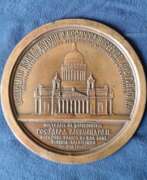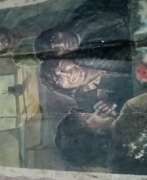Russian classicism

Russian classicism
Russian classicism, a prominent cultural movement in Russia, significantly shaped the nation's artistic landscape. This movement, distinct in its interpretation and timeframe, diverged from Western European patterns, reinterpreting the canons of Greek and Roman antiquity, the Renaissance, and the classicism of the 18th and 19th centuries.
In the late 18th to early 20th century, Russian classicism experienced a notable revival. This was partly a reaction against the extravagance of Art Nouveau, with architects and artists seeking to repossess simplicity through the geometry of basic shapes and clean surfaces. Giacomo Quarenghi, a pivotal figure in Russian neoclassical architecture, exemplified this shift. Invited by Catherine the Great, he transformed St. Petersburg into a classical city, intertwining Palladian and Roman influences in his designs.
Russian classicism stood out for its moderation and ethical acceptability in contrast to the perceived excesses of previous styles. It adapted to the urban architectural needs of the era, blending classical elements in a contemporary context. Notable examples of Russian classicism include Quarenghi's work on the Peterhof Palace and the Hermitage Theatre, and the construction of significant buildings like the Academy of Sciences and the State Bank Palace in St. Petersburg.
Russian classicism's impact extended beyond architecture into other forms of art, including painting and sculpture, where it embraced a similar ethos of simplicity and adherence to classical standards. This movement, while rooted in historical styles, adapted to the social and cultural context of its time, reflecting Russia's unique position at the crossroads of Eastern and Western artistic traditions.
For collectors, auctioneers, and experts in art and antiques, Russian classicism offers a rich tapestry of historical and cultural significance. Its influence is evident in numerous buildings and artworks, many of which can be viewed in museums and galleries today. To stay informed about new product sales and auction events related to Russian classicism, sign up for updates and explore this fascinating and distinct chapter in the history of art.
| Country: | Europe, Russia, Russian Empire |
|---|---|
| Start of the period: | 1760 |
| End of the period: | 1855 |



